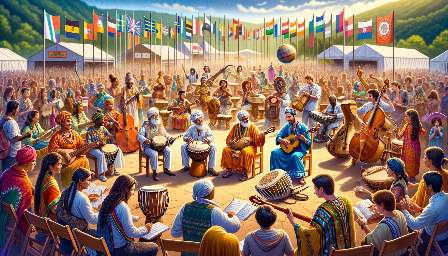The diaspora has played a significant role in shaping the evolution of Asian music across different regions, connecting it to the broader context of world music. Through migrations and cultural exchanges, Asian communities have carried their musical traditions to new locations, where they have interacted with local cultures and global influences. This has resulted in a rich tapestry of sounds, styles, and innovations, reflecting the diverse experiences and identities of the Asian diaspora.
Historical Context and Migration Patterns
The history of Asian music is deeply intertwined with the movement of people and the dispersion of Asian communities around the world. From the early waves of migration to contemporary global mobility, the diaspora has led to the transmission of musical practices, instruments, and genres across continents. In each region, these musical traditions have encountered distinct social, political, and economic environments, contributing to their evolution in unique ways.
Impact on Music Styles and Genres
The diaspora has fostered a dynamic fusion of musical styles and genres, blending traditional Asian sounds with elements from diverse cultural traditions. For example, the fusion of Indian classical music with jazz in the United States or the incorporation of Southeast Asian influences in the music scenes of Australia exemplify the ways in which diasporic communities have reshaped and redefined their musical heritage.
Revival and Preservation of Heritage
While migration has facilitated the transformation of Asian music, it has also served as a catalyst for the revival and preservation of heritage. In diaspora communities, efforts to safeguard traditional music and dance forms have been vital in maintaining cultural identity and transmitting ancestral knowledge to future generations. This dual process of innovation and conservation has led to a continuum of musical expression, reflecting the dynamism of Asian diasporic experiences.
Global Connections and Collaborations
The impact of diaspora on Asian music extends beyond regional boundaries, fostering global connections and collaborations. As artists and musicians traverse transnational spaces, they engage in cross-cultural dialogues, creating hybrid musical productions that transcend geographic borders. This interconnectedness contributes to the richness and diversity of world music, highlighting the global resonance of Asian musical contributions.
Conclusion
The evolution of Asian music in different regions, shaped by diaspora experiences, exemplifies the interconnectedness of cultural expressions and the transformative power of migration. By embracing diversity and embracing change, Asian music continues to thrive as a vibrant and integral component of world music, resonating with audiences across the globe.










































